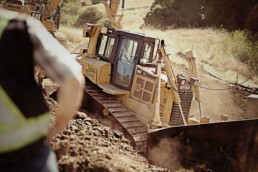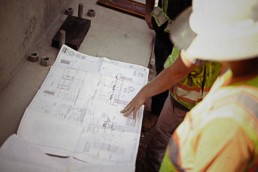Oxidation Pond Closure
Oxidation Pond Closure
CHEVRON ENVIRONMENTAL MANAGEMENT COMPANY
Project Value: $12 Million
Scope
Cap and Title 27 closure for a former 66-acre oxidation pond system. At the time, this was the largest active Title 27 Closure project in the United States.
- Remediation
- Grading
- Paving
- Underground
- Earthmoving
- Soil mixing
Challenge
We needed to solidify and stabilize F037 waste sediments in large inaccessible pond cells to suspend contaminants as well as create usable area for the facility owner. Twenty acres were designed as a “floating cap” where only the top three feet of sediment were stabilized and encapsulated the remaining sediment below.
Solution
We designed direct pneumatic delivery and placement of Portland Cement and Fly-ash to cells and direct placed soil amendments. This eliminated the need for on-site silo storage and secondary delivery operations of cementitious materials. We used GPS guided equipment to grade and place subgrade and finish surface of aggregate base rock, reducing the personnel required for the task.
Project Success
We completed the closure ahead of schedule and under budget. Our innovative approach resulted in a client cost savings of over $2.5 million and reduced risk exposure.
Bay View Site Access Improvement
Bay View Site Access Improvement
LAWRENCE BERKELEY NATIONAL LABORATORY
Project Value: $5 Million
Scope
Demolish existing reinforced concrete structure to provide the real estate for new building construction, relocate existing compressed air line, install new fire and domestic water lines, install soldier pile with several rows of tie-backs, install new reinforced concrete retaining walls and new stair structures.
- Demolition
- Soil Disposal
- Site Restoration
- Relocation of Underground Utilities
- Grading
- Paving
- New Retaining Wall Construction
- Underground
Challenge
The underground compressed air line was in a challenging location and a Bay Area Quality Management District Permit and Soil Disposal Profile was not covered in the design drawings.
Solution
We prioritized the project activities and stockpiled the soil for testing to accommodate and achieve the project schedule.
Project Success
We prevented a more than six month delay to the project schedule and new building construction started as planned.

